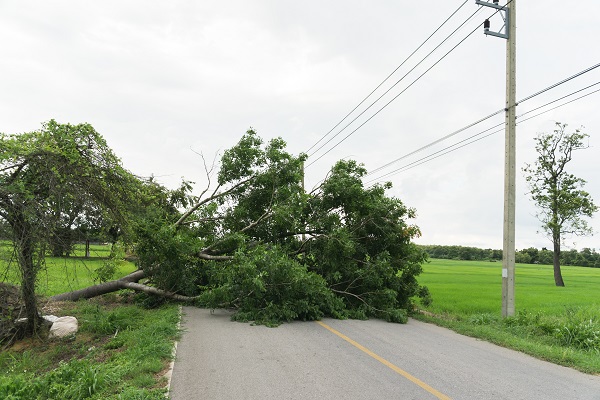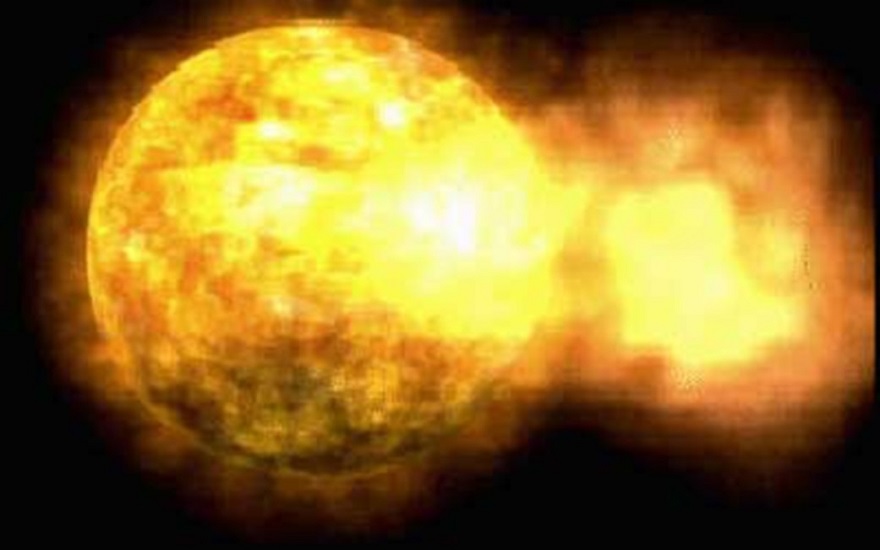Blackouts are just one of the power problems that can affect our electricity supplies. We take a look at sags, surges, and a few of the other most common issues…
Sustained power cuts in the UK are a mercifully rare event. According to National Grid’s annual report for 2018-19, the overall reliability of the National Electricity Transmission System was 99.999967%. On average, most people are without electricity for less than an hour a year.
But there are a whole host of other issues relating to power quality that can impact the electronic-based gadgets, devices, machinery and microprocessors that dominate our modern lives.
“Power quality” is defined as any variation in electrical power (i.e. voltage, current or frequency) that interferes with the normal operation of equipment.
There are several factors that influence power quality. Some relate to the electrical distribution network itself, for example, equipment failures, periods of increased demand, and extreme weather.
And even when the mains supply reaches the end-user’s in a stable and clean state, that’s no guarantee. There are still many things that can affect power quality, such as switchgear faults or equipment that needs to draw lots of current during start-up.
Let’s take a look at some of the most common power problems and what can be done to mitigate their impact.
1. Sags
A sag is one of the most common power problems. Also referred to as a dip, it happens when there’s a brief drop in voltage of at least 10% below the usual mains supply.
What can cause a sag? They tend to take place when a load that draws a high inrush current, such as motors, air conditioning systems or industrial equipment, starts up. Did you know that a motor can draw as much as six times its normal running current when it first fires up?
Another reason is when there’s an issue on the electricity distribution network, for example where a fault needs clearing.
Sags can lead to power supply units (PSUs) drawing down more current than they usually would, which generates additional heat and places stress on key components.
Drops in voltage can also see voice processing hardware fail or inadvertently reboot.

2. Brownouts
Brownouts are longer versions of a sag or dip i.e. where the voltage drops at least 10% below the nominal mains supply, but for a sustained period.
Whereas a sag only lasts for at most several cycles, a brownout can persist for anywhere from a few minutes to several hours or even days.
Such undervoltages are usually the result of either increased power demand or severe weather placing extra pressure on the electricity networkd.
They lead to flickering lights, intermittent internet connections and electrical appliances switching off and turning off.
In fact, the term “brownout” is said to originate from the effect seen in New York, where high demand for air conditioning often has a knock on affect of lowering the lighting in offices and apartment blocks.
Sustained undervoltage poses particular problems for non-linear loads as found in computers. In some respects, a brownout is actually more damaging than a blackout with the complete loss of electricity.
That’s because a device continues to receive power, albeit at a reduced rate, which can lead to malfunction.
3. Power Surges
A power surge is the opposite of a sag – a short period where there’s an increase in voltage at least 10% above the usual mains supply.
Also referred to as a swell, surges tend to occur on high-impedance neutral connections or when there’s a single-phase fault on a three-phase electrical system.
In addition, they can also happen in the immediate aftermath of turning off a large load.
When there’s a power surge, automatic protection mechanisms kick-in, often resulting in a system crash. They can also trip downstream circuit breakers and generate excess heat, which speeds up component deterioration.
Fitting power line conditioners can reduce the risk of damage from a power surge. Likewise, many modern uninterruptible power supplies (UPS systems) provide built-in surge protection.

4. Spikes and Transients
A transient – or spike – is a fast-moving burst of high energy that is superimposed onto the normal mains electricity supply.
Spikes last for a few milliseconds and are caused by the sudden release of stored energy.
They’re different to a power surge as they are shorter in duration but much larger in magnitude. For example, a spike can reach several thousand volts (i.e. some measure 6 kV and above).
Such power problems are common following lightning strikes or during electrical storms. In addition, inductive motor-based loads such as escalators, lifts or even fridge-freezers can cause transients too.
Spikes can damage circuit boards and processors, as well as causing data corruption and memory loss.

5. Electrical Noise
Electrical noise is an unwanted high-frequency disturbance.
There are two main types Normal Mode Noise (which takes place between the phase and neutral) and Common Mode Noise (which happens between the supply line and earth).
Electrical noise is also classified as “internal” – from within the electrical system caused by faults in switchgear or design flaws – or “external”.
The latter includes the result of lightning and electrical storms, radio transmitters interfering with grid frequency or electromagnetic interference to currents flowing through distribution cables.
Electrical noise disrupts circuit operation, which can potentially damage equipment. Electromagnetic and radio frequency interference are also two of the most common factors that cause data corruption.
What can you do to control electrical noise? One solution is installing isolation transformers or filters. A UPS system is also able to isolate the critical load.
Another idea is to simply relocate the load away from the most likely source of interference.

6. Harmonics
Harmonics are a distortion of the waveform generally caused by the load itself, where the frequency is a multiple of the fundamental.
So here in the UK, where the fundamental frequency is 50 Hz, the second harmonic is 100 Hz (2 x 50 Hz), the third harmonic is 150 Hz (3x 50 Hz) and so on.

Harmonics cause issues primarily with non-linear loads that draw their power regular, modulated pulses from the mains, rather than in a continuous linear.
Harmonic numbers in multiples of three i.e. 3rd, 9th or 15th are known as Triple-N or Triplens. As these Triplen harmonics are in phase with each other, their magnitudes add together to significantly increase the current flowing within the neutral.
Even in cases where the load is equally balanced across all three phases, Triplens can generate neutral currents as much as 1.73 times the average. Such instances can overload conductors and switchgear.

7. Frequency Variation
In stable power systems such as the UK, such events are rare. Of course, the events of 9 August 2019 prove that they can still take place – and have a significant impact!
Frequency variation does tend to be an issue at sites that require standby generators. This is particularly the case if the generator is heavily loaded or poorly maintained.
While most IT equipment these days can handle minor shifts in generator frequency, sensitive devices or motors that depend on regular power cycles can be impacted over time.
If a motor runs too fast or slow to match the input frequency, such inefficiency can speed up the rate of wear and tear.

8. Blackouts
A blackout is a complete mains power supply failure resulting in a power cut or outage that lasts for anything for a few milliseconds to several minutes, hours, days – or in the worst-case scenario – even longer.
Read about how a power cut in New Zealand’s biggest city Auckland took five weeks to fully resolve!
In the main, a blackout tends to be the result of damage to the electricity grid or essential infrastructure. This could be caused by severe weather, unexpected equipment failure, or a circuit breaker tripping.
Of course, even a momentary interruption to electricity supplies can have catastrophic consequences. Blackouts can crash IT hardware or cause problems with data and voice processing systems. Outages damage critical equipment and bring factory production lines grinding to a halt.
In any mission-critical environment, organisations deploy UPS systems to provide emergency backup if the worst ever happens.
Uninterruptible power supplies are able to instantaneously take up the load, preventing damaging downtime and minimising the potential disruption.





